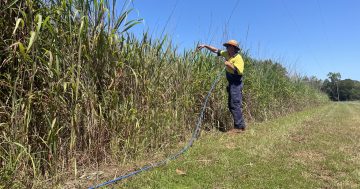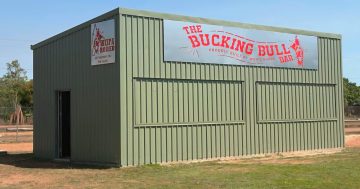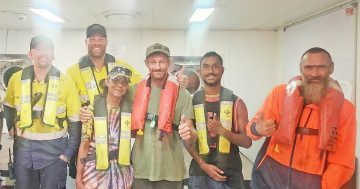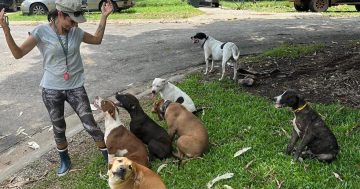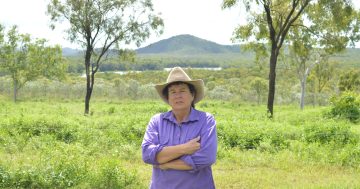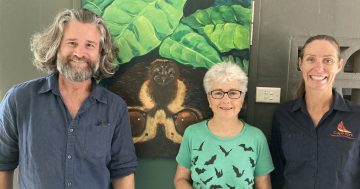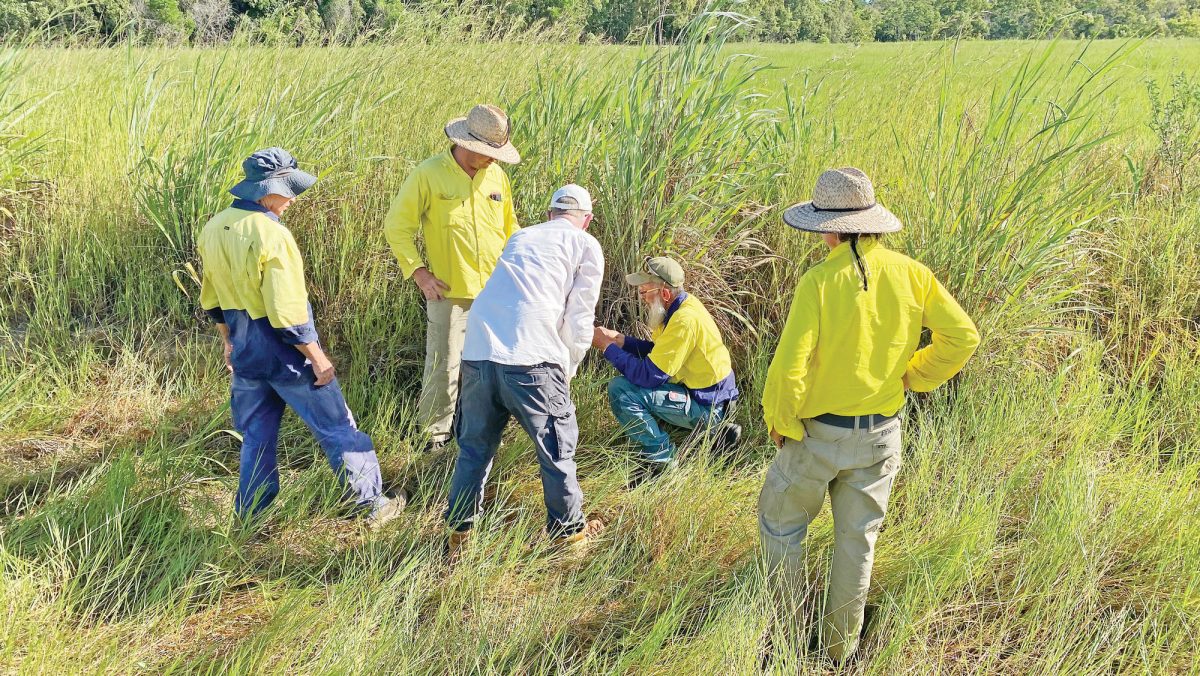
The Gamba Grass Task Force at work in Cook Shire during last year’s joint management operation.
FAR North councils and stakeholders have come together to provide a united front against a highly invasive grass which is threatening local ecosystems.
The Gamba Grass Task Force convoy will hit the roads around the Cape this week, tackling the grass on properties, roadsides and reserves as part of an ongoing coordinated management effort.
Cape York Natural Resource Management coast ecosystems coordinator Dave Preece said the work builds on the task force’s first collaboration in May 2022.
“Having multiple crews identifying and treating gamba grass while collecting GIS data has dramatically increased existing knowledge of distribution that will be critical to future programs and ongoing monitoring,” Mr Preece said.
“We know what this weed can do, as we’ve seen in the Northern Territory the potential it has to spread and fuel fires which impact infrastructure and threaten lives. We don’t want a repeat of that here.”
The task force includes members from Hinchinbrook, Cook, Mareeba, Douglas and Tableland councils, in addition to crew from Biodiversity Queensland, Department of Resources, Queensland Parks and Wildlife Service, Jabalbina Rangers and Balnggarrawarra Rangers.
Cook Shire biosecurity and local laws manager Darryn Higgins said the task force was looking forward to another productive project.
“We had a terrific response last year and the treatment and presence of crews really brought the issue of Gamba Grass to the public’s attention,” Mr Higgins said.
“This year will be no exception.”
Property owner Corey Duncan said the initial task force treatment last year had removed a large portion of the grass on his Poison Creek Road property.
“I had seen a grass that I don’t usually have popping up along the power lines and I got talking to Darryn and John from Kings Plains and they pointed out what gamba grass was,” Mr Duncan said.
“The areas that they sprayed last year, it hasn’t come back; they probably knocked at least three quarters of it, which is a very good outcome.”
Mr Duncan said the task force hoped to remove any grass that had grown from seed since last year’s spray, and he hoped the outbreak would be completely eradicated this year.
Mr Higgins said the task force hoped to expand the project from last year’s positive start.
“Our intention is to expand on last year’s momentum by increasing awareness and reducing the distribution of gamba grass across the catchment,” he said.
“With the help of Cape York NRM, we can continue to host these events and bring in like-minded agencies, pool resources and ensure a cost-effective response.”
The introduced fodder grass pushes out native species, and its high biomass fuels intense wildfires leading to further native species loss and long-term environmental damage.


